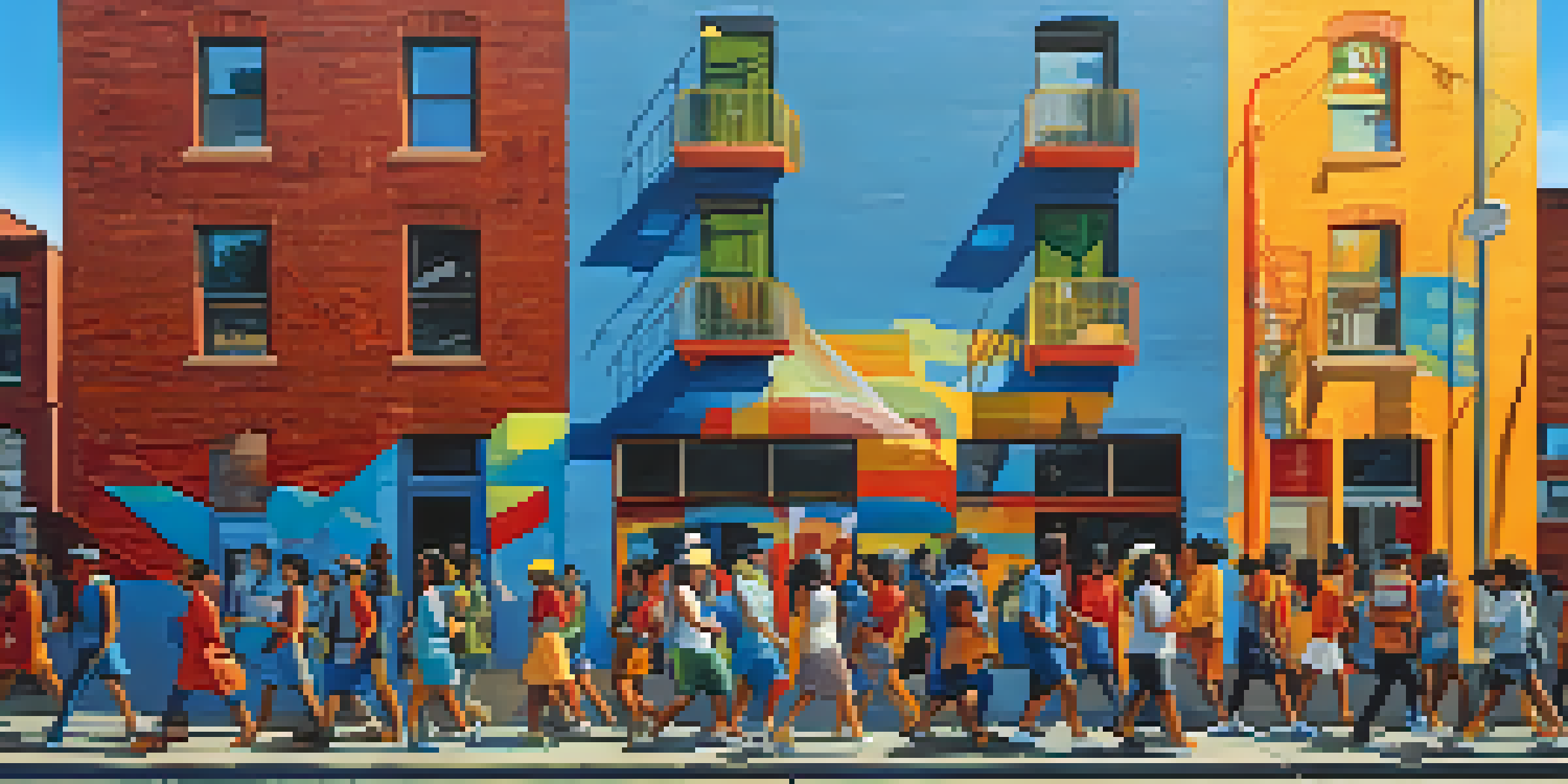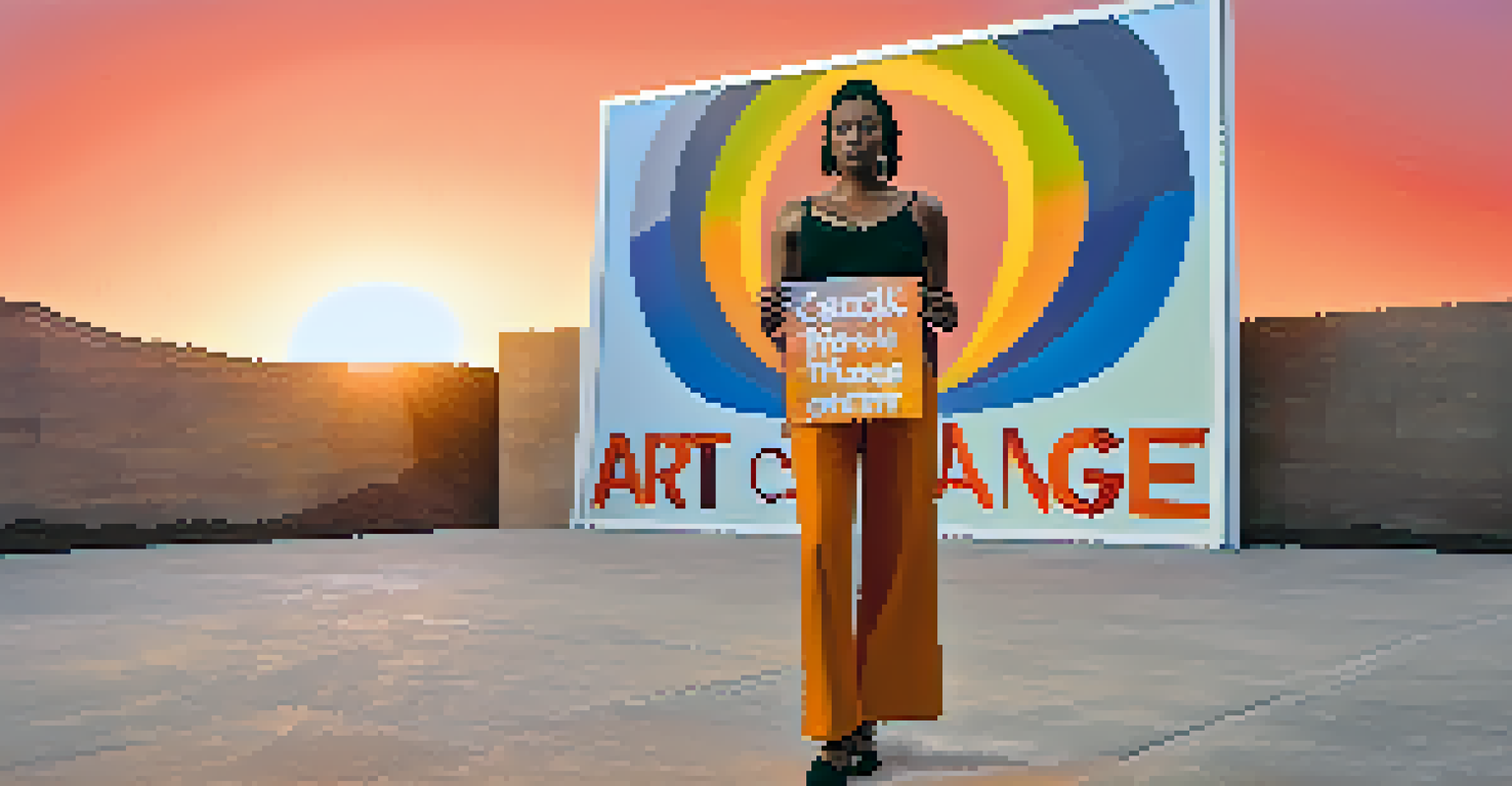How Political Movements Shape the Landscape of Painting

Understanding the Connection Between Politics and Art
Art and politics have long been intertwined, with each influencing the other. When political movements emerge, they often inspire artists to reflect on the prevailing social conditions. This relationship can be seen throughout history, where artists have used their work as a platform for commentary and change.
Art is not freedom from discipline, but disciplined freedom.
For example, during the French Revolution, artists like Eugène Delacroix created works that celebrated the spirit of freedom and rebellion. The poignant imagery not only captured the emotions of the time but also contributed to the evolving narrative of society. As such, art becomes not just a reflection of reality but a catalyst for political thought.
Understanding this connection helps us appreciate how the canvas can become a powerful tool for expressing dissent, solidarity, or hope in society. It's a reminder that art doesn't exist in a vacuum; it grows and thrives within the context of its time.
Historical Examples of Political Influence in Art
Throughout history, numerous political movements have significantly shaped artistic expression. For instance, during the Renaissance, the rise of humanism brought about a shift in how artists depicted the human form and experience. This movement was spurred by a renewed interest in the individual, influenced by the political climate of the time.

Similarly, in the 20th century, the rise of totalitarian regimes led to the emergence of movements like Dada and Surrealism. Artists such as Salvador Dalí and Marcel Duchamp pushed boundaries, often in response to the absurdities of war and oppression. Their works questioned traditional norms and highlighted the chaos of their political environments.
Art Reflects Political Movements
Throughout history, art has served as a powerful reflection and critique of political climates, influencing societal change.
These historical examples illustrate how art can serve as both a mirror and a critique of political realities, allowing us to see the world through the eyes of its creators. They remind us that art is not merely decorative; it carries the weight of history and the cries for change.
Modern Political Art: A Reflection of Contemporary Issues
In today's digital age, political art continues to evolve, often addressing contemporary issues like climate change, social justice, and inequality. Artists now use various mediums, from street art to digital installations, to engage audiences in critical conversations. This accessibility allows for a broader participation in the dialogue surrounding political movements.
Every artist dips his brush in his own soul, and paints his own nature into his pictures.
Take, for instance, the work of contemporary street artists like Banksy, whose pieces often carry strong political messages. His art challenges the status quo and invites viewers to reflect on societal issues. The immediacy of street art creates a dynamic interaction between the artwork and its environment, making it a powerful vehicle for political expression.
Modern political art serves as a reminder that the fight for justice and change is ongoing. As society grapples with pressing issues, artists are there to capture the zeitgeist and provoke thought, encouraging us to consider our roles in shaping the future.
The Role of Art Movements in Political Change
Art movements often emerge as a response to political climates, rallying individuals around a common cause. For example, the feminist art movement of the 1970s challenged traditional gender norms and aimed to elevate women's voices in the art world. This movement not only transformed artistic practices but also sparked broader discussions about gender equality.
Similarly, the Black Arts Movement sought to create a distinctive aesthetic that reflected the experiences of African Americans. Artists used their work to address racial injustice and assert cultural identity, paving the way for future generations of artists to explore these themes. Their efforts illustrated the power of art as a tool for activism.
Modern Art Engages Current Issues
Contemporary political art addresses pressing issues like climate change and social justice, fostering critical conversations.
These movements highlight how art can transcend aesthetics, becoming an integral part of social and political change. By harnessing creativity, artists can engage communities and inspire action, demonstrating that art is a vital force in shaping societal values.
Public Response to Political Art: Controversy and Support
Political art often elicits strong reactions, ranging from support to controversy. Some viewers embrace the messages conveyed, finding empowerment and validation in the artwork. On the other hand, political art can also provoke backlash, especially when it challenges deeply held beliefs or confronts power structures.
For instance, the work of artists like Ai Weiwei often sparks debate due to its criticism of government policies and human rights violations. His art serves as an act of defiance, drawing attention to issues that might otherwise be overlooked. Such reactions underscore the potential of art to stir public discourse and inspire change.
The varied responses to political art remind us that it is a powerful means of communication. Whether celebrated or condemned, it fuels conversations and encourages individuals to engage with pressing social issues, showcasing the enduring impact of art.
The Future of Political Movements and Artistic Expression
As we look to the future, the intersection of political movements and art will likely continue to evolve. With the rise of social media, artists have new platforms to amplify their voices and reach wider audiences. This democratization of art allows for diverse perspectives to emerge, enriching the dialogue around political issues.
Moreover, the global nature of contemporary art means that movements can resonate across borders, drawing connections between different struggles for justice. Artists from various backgrounds can collaborate, sharing their experiences and insights to foster a sense of solidarity. This interconnectedness is crucial in addressing global challenges.
Art Movements Drive Social Change
Art movements, such as the feminist and Black Arts Movements, illustrate how creativity can rally communities and inspire activism.
Ultimately, the future of political art lies in its ability to adapt and respond to changing landscapes. As new movements arise, artists will undoubtedly find innovative ways to engage with their audiences, ensuring that art remains a vital part of the ongoing quest for social change.
Conclusion: Art as a Catalyst for Social Change
In conclusion, the relationship between political movements and painting is both profound and dynamic. Throughout history, artists have used their work to comment on and influence societal issues, creating a dialogue that continues to this day. Political art not only reflects the times but also shapes them, urging us to think critically about our world.
As we navigate current challenges, the role of art in fostering understanding and empathy becomes ever more crucial. By engaging with political art, we can gain insights into the struggles and aspirations of others, bridging divides and inspiring action. The power of art lies not just in its beauty but in its capacity to provoke thought and ignite change.

Thus, as we move forward, let us remember the importance of art as a catalyst for social change. By supporting artists and their messages, we contribute to a culture that values creativity, expression, and the pursuit of justice.